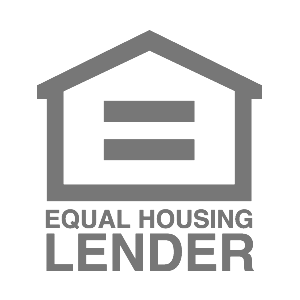
When you’re ready to buy the home of your dreams, a jumbo mortgage might be necessary for a luxury property that exceeds standard loan limits.
This type of loan allows you to borrow more than standard mortgages offer. Let’s explore what a jumbo mortgage is, how it works, and its pros and cons.
What is a jumbo loan?
Jumbo loans are mortgages for expensive homes that require a loan amount that exceeds conforming loan limits. The Federal Housing Finance Agency (FHFA) sets conforming loan limits, which vary based on the home’s units and location.
For most areas, the ceiling is $766,550 for a single-family home, but in luxury markets like Hawaii, that limit is $1,149,825, according to Fannie Mae.
Say you want to buy a single-family home in Fulton County, Georgia, listed for $850,000 with $90,000 down. The financing you need is greater than the limit for conforming loans, and you could explore jumbo mortgage options to make the purchase.
How does a jumbo loan work?
Jumbo loans work like other mortgages. However, credit score, income and down payment requirements are generally higher because you borrow a larger sum.
It rates may also be higher than conventional loans since they are riskier for lenders to make. Lenders can sell conforming loans to government entities, freeing up funds for them to make other loans. On the other hand, lenders can’t sell jumbo loans similarly because they don’t meet government-set loan limits.
Besides those differences, it can have fixed or variable interest rates like other mortgages. The steps for applying for a jumbo loan are also similar—you apply, and lenders will examine your finances during underwriting to make an approval decision.
The pros and cons of a jumbo loan
Pros
- High loan amounts: Lenders usually provide jumbo loans with amounts ranging from $3 million to $5 million; however, some offer up to $30 million, which can help you buy a luxury home.
- Flexible loan options: Jumbo loans offer a variety of loan terms, enabling you to tailor payments according to your objectives. Interest rates can be either fixed or adjustable through an adjustable-rate mortgage (ARM), where the rate remains fixed for a specific number of years before adjusting.
- Financing for multiple property types: It may be used to buy a primary residence, vacation home or investment property.
- Equity-building opportunity: If you choose a jumbo loan with a shorter fixed rate (15—or 20-year), you could build home equity quicker than a 30-year loan. This can be beneficial if you eventually decide to sell your home or take out a home equity loan (HELoan) or home equity line of credit (HELOC).
Cons
- Higher down payment requirements: It may require you to put 10% to 30% down on a jumbo loan, whereas some conventional loan programs allow as little as 3%.
- Cash reserves: When applying for jumbo loans, you need enough cash reserves to cover 6 to 12 months of mortgage payments.
- Higher closing costs: Closing costs are fees required to process a mortgage and typically cost 2% to 5% of the total purchase price. This means you’ll pay more the higher your jumbo loan is. For example, closing costs for a $3 million property could cost $60,000 to $150,000.
How to qualify for a jumbo loan
To qualify for it, borrowers typically need a high credit score (700 minimum), a low debt-to-income ratio, and a substantial down payment.
Lenders may also require additional documentation and 6 to 12 months of cash reserves. A stable income and a good credit history are also important.
Keep in mind that the specific requirements can vary between lenders, so it’s best to consult with a mortgage professional to understand the exact criteria for obtaining a jumbo loan.
Should you take out a jumbo loan?
Buying a home is a major purchase, especially when you’re buying a luxury property. Whether taking out a jumbo loan makes sense depends on your goals and finances.
Before rate shopping, check your credit score and confirm that you have enough cash saved for the down payment, cash reserves and closing costs. If that financial checkup shows you have the resources to buy your dream home, a jumbo loan can make the purchase a reality.
Read more:
Eligibility for a home equity loan or HELOC up to the maximum amount shown depends on the information provided in the home equity application. Depending on the lender, loans above $250,000 may require an in-home appraisal and title insurance. Depending on the lender, HELOC borrowers must take an initial draw of the greater of $50,000 or 50% of the total line amount at closing, except in Texas, where the minimum initial draw at closing is $60,000; subsequent HELOC draws are prohibited during the first 90 days following closing; after the first 90 days following closing, subsequent HELOC draws must be $1,000, or more, except in Texas, where the minimum subsequent draw amount is $4,000.
The amount of time it takes to get funds varies. It is measured from the time the lender receives all documents requested from the applicant and depends on the time it takes to verify information provided in the application. The time period calculation to get funds is based on the first 4 months of 2023 loan fundings, assumes the funds are wired, excludes weekends, and excludes the government-mandated disclosure waiting period.
For Texas home equity products through Prosper, funds cannot be used to pay (in part or in full) non-homestead debt at account opening.
Depending on the lender, qualified home equity applicants may borrow up to 80% – 95% of their primary home’s value and up to 80% – 90% of the value of a second home. In Texas, qualified applicants may borrow up to 80% of their home’s value. HELoan applicants may borrow up to 85% of the value of an investment property (not available for HELOCs).
Home equity products through Prosper may not be available in all states.
All home equity products are underwritten and issued by Prosper’s Lending Partners. Please see your agreement for details.
Prosper Marketplace, Inc. NMLS# 111473
Licensing & Disclosures | NMLS Consumer Access
